PONTE VEDRA BEACH — In the nine holes I spent with Smylie Kaufman on Thursday at the Players Championship, we spoke exactly twice. On the second hole at TPC Sawgrass, he shook my hand and nodded his assent when I asked if it would be OK to hover in his near vicinity, mostly eavesdropping, for the next two hours. And on the eighth hole, when he caught me looking over curiously as he chatted with a spectator—Kaufman was otherwise so focused that I couldn’t imagine who could steal his attention this way—he nodded at the man.
“This is my dad, by the way.”
His silence was not unfriendly; we had spoken on the phone earlier in the day, and he was open and funny. The remoteness on the course was a pure, almost ascetic concentration—the learned behavior of someone who may only speak once or twice on air in an hour, and then only for about 10 seconds, but who must be ready on a moment’s notice. The long minutes when he’s off the air are not spent idly; Kaufman is constantly moving, checking lies, reading greens, finding high ground and listening to the NBC feed coming through his headset. He’s often alone, stalking through the woods, seeking out the relatively quiet vantages from where he can deliver his snippets of wisdom when the voice in his ear calls the name of the third walker.
That voice usually belongs to Tommy Roy, NBC’s longtime lead golf producer who has been the chief of the truck since 1993. Roy runs his productions with an air of organized chaos. If you think of that command center as the heart of the octopus, the walkers are the most far-flung tentacles, extending to all parts of the course, attached to the most appealing groups but always flexible, and always duty-bound to gather information for the mothership. At the Players, the role of the walkers is filled by John Wood, the former caddie who has been with NBC since 2021; Roger Maltbie, the beloved veteran and former tour pro who is returning this week for an encore performance, his first since 2022; Kaufman. But though he’s the newest of the bunch—he got his first taste of broadcasting with ESPN+ at the 2022 PGA Championship at Southern Hills and joined NBC in his current role at the celebrity American Century Championship last summer—there’s already a sense that Kaufman is a quick learner who has a special knack for the very difficult balancing act inherent to the job with impressive speed.
“Smylie is one of the great up-and-coming announcers in golf,” Roy said. “He’s incredibly well-connected with the current generation of players, and his unique perspective and access is a benefit for our broadcasts and the viewers at home.”
“He’s very interactive, he keeps it fun, he keeps it light, and he really seems to be enjoying this role,” said Drew Hinesley, who caddied for Kaufman and now works with him at NBC, helping him to get yardages, analyze lies and anything else he needs. “I know it can’t be easy sometimes, to be removed from what you did [as a player], but in my mind, I can see Smylie in that similar career arc as Roger Maltbie, doing this for a long time.”
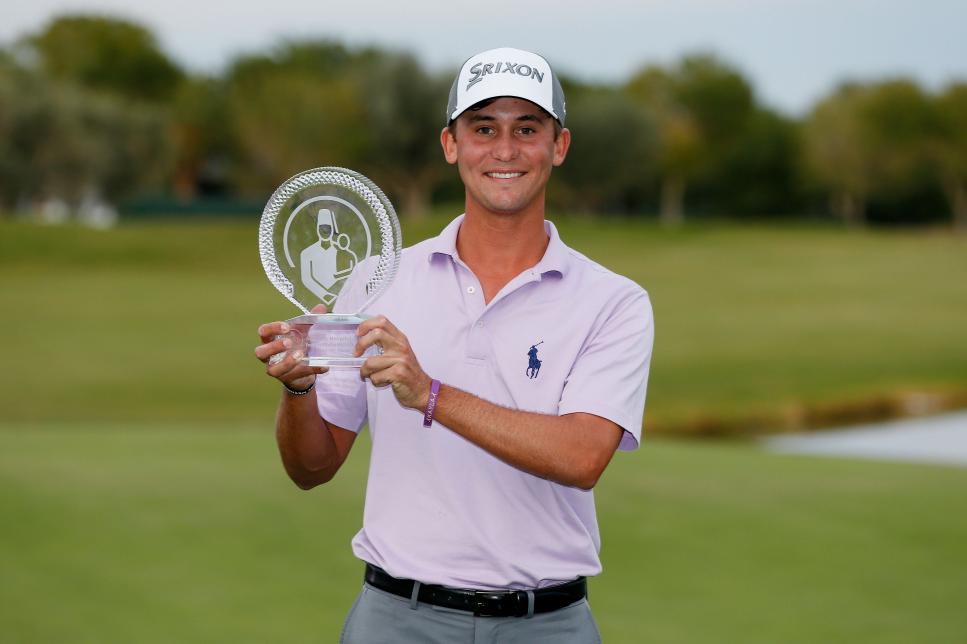
Smylie Kaufman celebrates with the trophy after winning the 2015 Shriners Hospitals For Children Open.
Scott Halleran
Young for the job at 32, Kaufman would not have scripted this path for himself. A year after graduating from LSU in 2014, he won on the then-Web.com Tour (now Korn Ferry), earned his PGA Tour card in his first year and captured a PGA Tour title that fall at the Shriners. His career was off to a fast start, fighting his way into the final pairing at the Masters in 2016 and lighting up social media on a spring break trip with Jordan Spieth, Justin Thomas, and Rickie Fowler only raised his profile. But almost as soon as he rose, Kaufman’s game vanished, with a wrist injury and the attendant mental hurdles combining to unleash what felt like an extended nightmare over the next five years. He recognizes now that anxiety overwhelmed him, and in 2022, he opened up to his wife about wanting to take a break and try something—anything—else.
He had worked as a brand ambassador for Massage Envy, making videos in which he interviewed fellow pros, and his agent sent a compilation video to ESPN. Executives there decided to give him a shot at Southern Hills as a walker for their digital coverage of the 2022 PGA. Kaufman was shocked to go right to a major, but though he blew his first call—he predicted that Will Zalatoris would have a tough time hitting a difficult approach inside 30 feet, just before Zalatoris hit it to four feet—he took to it almost immediately and felt a kind of comfort and ease that had eluded him in his playing career.
More From Golf Digest 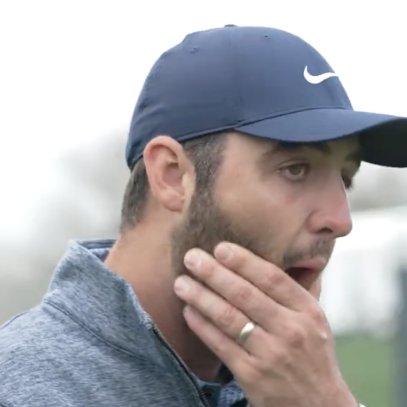 Welp, I’m Gonna Go Cry Players 2024: Scottie Scheffler tearing up over his wife Meredith will hit you in every feel imaginable
Welp, I’m Gonna Go Cry Players 2024: Scottie Scheffler tearing up over his wife Meredith will hit you in every feel imaginable 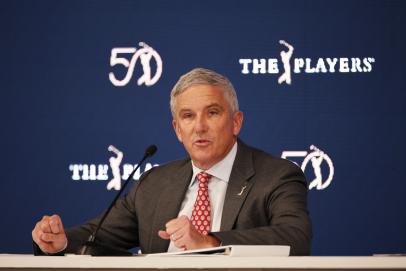 Players Championship 8 questions (and answers) on the status of the PGA Tour’s deal with Saudi Arabia
Players Championship 8 questions (and answers) on the status of the PGA Tour’s deal with Saudi Arabia 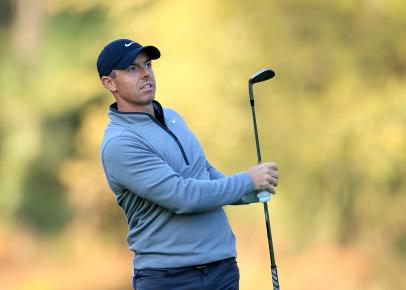 players championship Players 2024: Rory McIlroy’s rules controversies could’ve been avoided
players championship Players 2024: Rory McIlroy’s rules controversies could’ve been avoided
His role at ESPN for that tournament could best be described as “longform,” with fewer cutaways and no commercials. But when he landed the job with NBC, he no longer had license to talk at length about everything he could see. Instead, he was on the spot for extremely short segments at unpredictable intervals, and he had to train himself to be concise and to decide which information was most critical to convey in the limited time available. He had help from certain mentors; Trevor Immelman gave him a few tips before he left for CBS, such as not leading with the distance of a shot on every approach. Be creative, he advised him, and don’t be afraid to take risks, even as far as predicting an outcome for a shot or putt. Curt Byrum also guided him on the path, with tips on how to cut out filler language, right down to avoiding the word “yeah” to start a sentence when the booth kicked it his way.
In Kaufman’s first year at NBC, the main things he learned were to speak slowly, despite the time limitations, and to constantly listen to the broadcast feed in his ear so he’s not duplicating information that came before. (He has an advantage there, too; though Kaufman has almost no trace of a Southern accent despite growing up in Alabama, he still has the slower cadence of Southern speech.) He’s had his struggles—he said his early failures last year pained him to such a degree that he would literally fall to his knees afterward, as though he had just missed an important putt—but the part of the job that required finding interesting information about each shot on the fly came naturally to him.
On Thursday at the Players, I had an education in what it means to be a walker on a live broadcast—to be Kaufman on the job. I had certainly seen walkers on course before, many dozens of times, but I had never focused long enough to get the bigger picture. Kaufman defied expectations. The center of his universe was the earpiece cracking in his right ear, and when anyone outside that universe spoke to him, as Hinseley put it, “he can hear the noise, but his ear drums are not processing the information.”
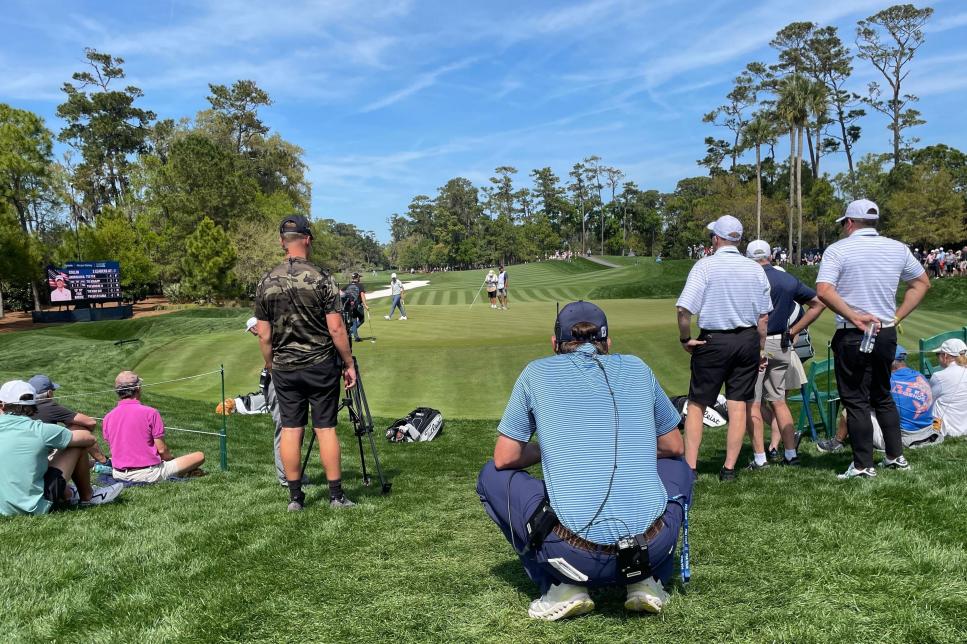
Smylie Kaufman crouches behind a green at TPC Sawgrass. (Shane Ryan)
With this thin form, Kaufman looks taller than his listed height of 6-foot-1, and though fans called out his name intermittently throughout the day, he cut a remote figure and did his best to seek isolation. When he wasn’t on the greens, he stayed well ahead of his group—Brian Harman, Collin Morikawa and Wyndham Clark—and even on the greens he would often find high ground far away from the action. His most urgent work came after tee shots, and after approaches. Then, he would jog up the fairway, find each ball, study the lie, get a series of sticky notes from Hinesley with the yardages of each shot, and race up toward the green. After the approach, he would once more take an up-close glance at each lie, then study his green book in order to give a read of if called to do so.
In the rare moments of stillness, Kaufman’s two favorite poses were standing with his right leg extended behind his left, hands on hips, elbows jutting out, or to sit cross-legged, folding up on himself. Even when he paused, it was only momentary, until a sudden whim seemed to take him and he would dash off to his next position.
All of which meant that it was nearly impossible to keep up with him to hear what he was actually saying into his microphone when he went on air. Lucky for me, NBC Sports compiled a series of clips from the time I followed him. On the third hole, a par 3, standing on the right edge of the fairway around the green and looking back at the players on the tee, he gestured urgently at the caddies—they signal the club to him—and, armed with a tidbit he had heard from Maltbie earlier, was ready when Wyndham Clark stepped up:
A hole later, he was on hand to analyze Harman’s tough lie in the rough:
In those clips, you can see Kaufman’s concise phrasing and his ability to highlight the most interesting bit of information, but you can also nitpick and hear some slight stumbles and verbal overlap with the announcers. When Clark putted for birdie on the fifth, though, the timing worked smoothly, and Kaufman chimes in as Clark lines up the putt with a perfect read:
On 15, after we had left him, Kaufman hearkened back to Immelman’s advice and made a bold prediction as Clark lined up another birdie putt:
The putt was off the club almost before Kaufman started talking, and he ad-libbed quickly to his prediction, paused for the shocked laughs when it went in, and then added context—”It was too easy, it was dead straight”—before they cut away.
It’s that natural ability and timing, in just Kaufman’s second season on the job, that seems to have NBC looking for opportunities to expand his reach, including the sit-down “Happy Hours” he now hosts on Fridays, when he interviews other players in an improvised outdoor studio setting on the course. Not only does this exercise new on-air skills for him, but it also pushes him in more arcane technical ways, like having to trigger commercials and send the broadcast out to other holes.
Kaufman knows he has plenty of work to do to hone this craft, and his first year has been a revelation in every sense. Along with the lessons he expected, there are esoteric skills that he didn’t even know he lacked. Those tend to revolve around the concept of the larger rapport among broadcasters, and among producers, that in the best moments turns them into one symbiotic unit.
“The thing I’ve tried to do the most on the broadcast is just listen to everybody else on the team,” he said. “To either integrate things from the show that have already been said, or to try to set up guys to still keep conversations going, to where it’s a really nice back and forth.”
In other words, to be an effective cog in the machine. The hardest moments for him aren’t the nervy stretches at the climax of an event, but the long hours early in the week, particularly when nobody in his group is playing particularly well. In those times, he might be off air for hours at a time, and that’s when it’s hardest to stay focused and deliver the goods when Roy snaps him from his reverie. That explains the constant movement, and the resolute game face, even when the stakes seem lowest. But when the pressure’s on, he reverts to his former career, and he can feel the same energy coursing through his body.
“I love the juice,” he said. “I feel like I can’t feel my legs and arms just like the players. It’s very nerve-wracking and fun. I love the adrenaline, and that’s why I love doing this so much.”
This article was originally published on golfdigest.com




